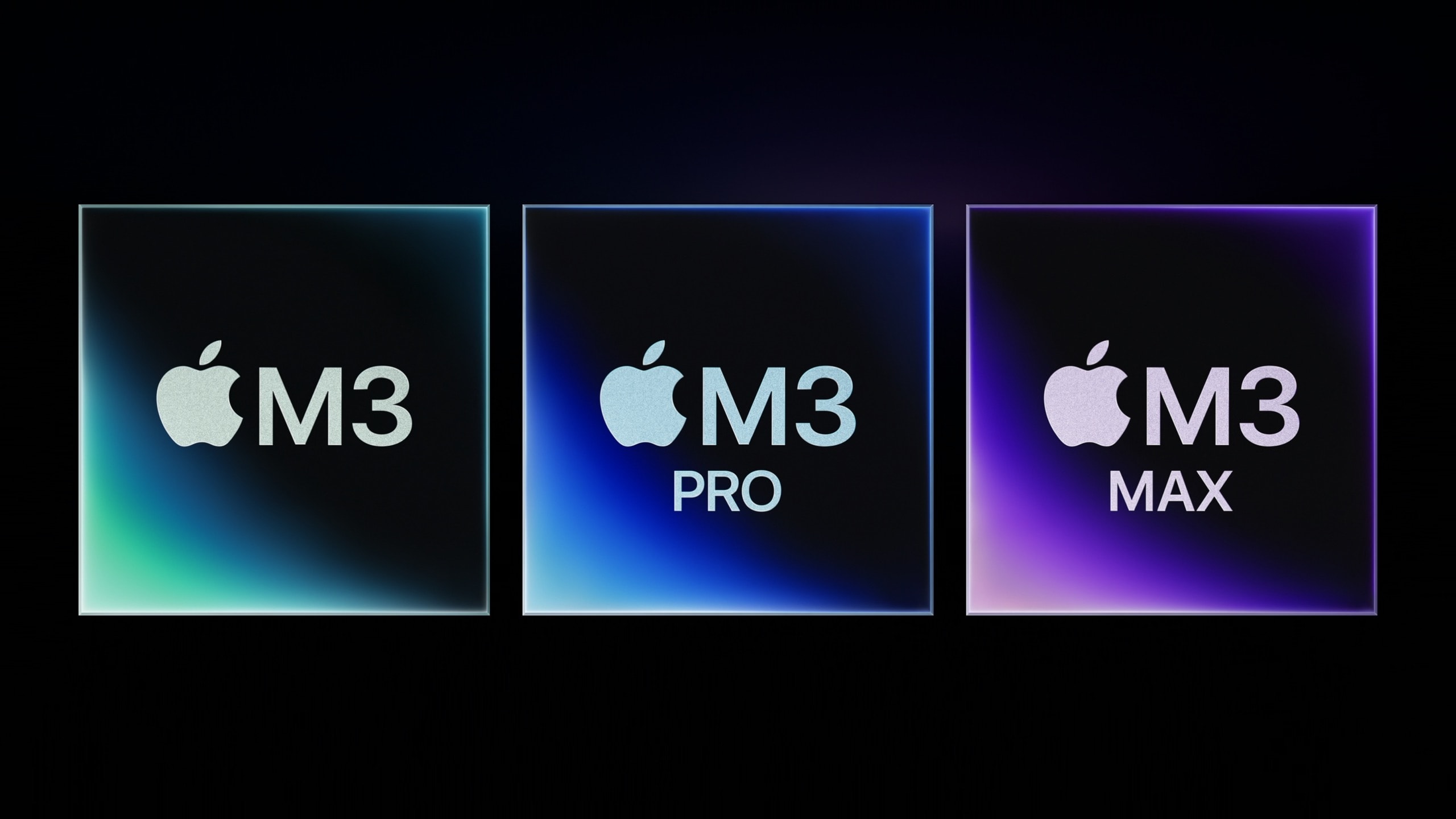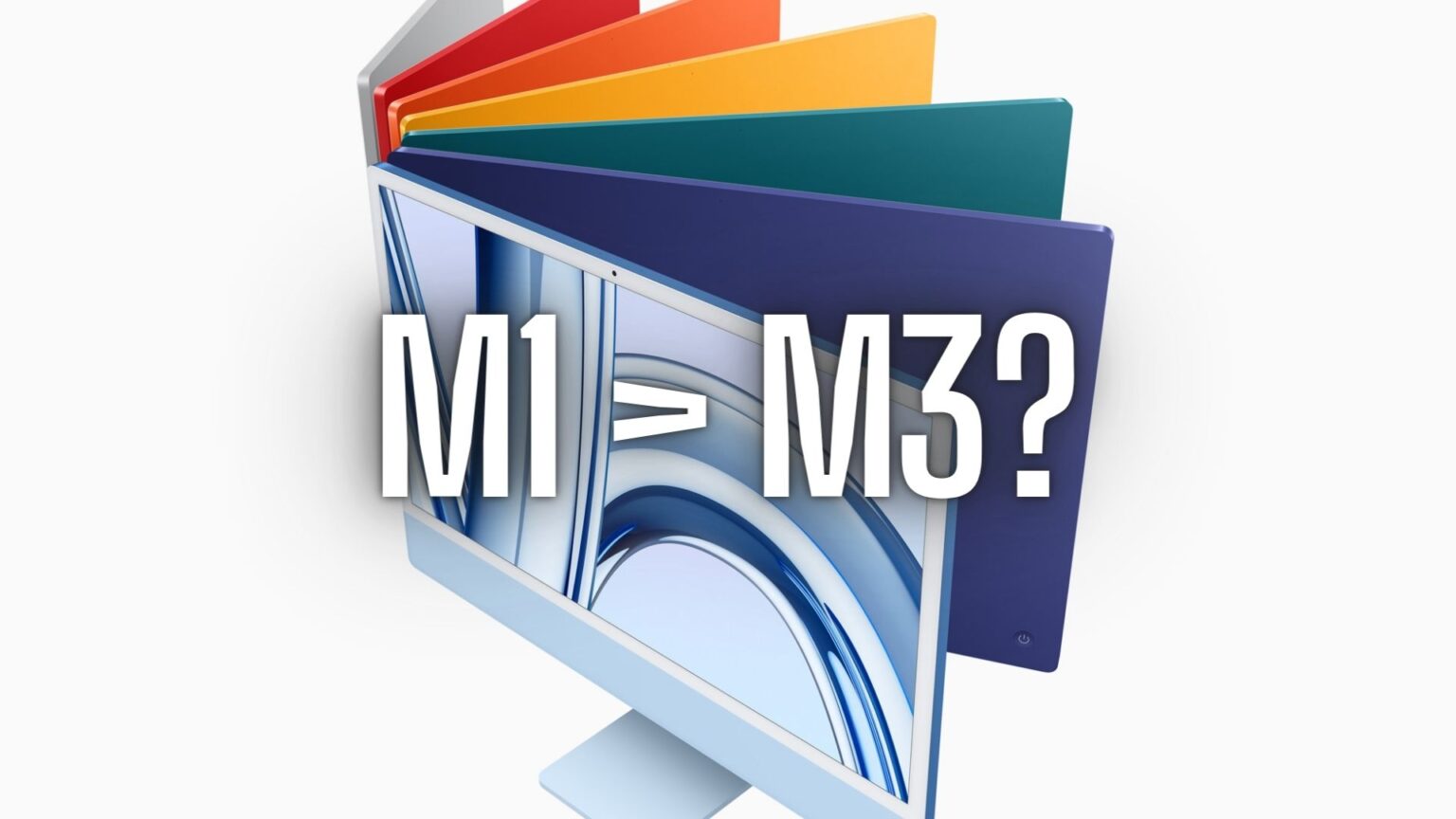Apple unveiled the 24-inch iMac with M1 chip way back in April 2021, and while the rest of the company’s Mac lineup got an M2 upgrade since then, the all-on-one desktop missed the boat. To make up for it, Apple announced the M3-powered iMac at its ‘Scary Fast’ event.
How does the 2023 iMac compare to its predecessor? Does it pack any other improvement besides the faster chip? Read this comparison to find out.
2023 iMac vs. 2021 iMac comparison
Apple’s newest iMac looks exactly like the 2021 model. And that’s not a bad thing, as the all-in-one received a substantial design revamp back then. This time, the company has only focused on upgrading the iMac’s internals with a faster chip and offering better wireless connectivity. While this might seem minor, it will help the iMac stay relevant in the PC market.
Table of contents
SoC: M3 vs. M1

Image: Apple
- 2023 iMac: M3 chip with 8-core CPU, up to 10-core GPU, up to 24GB unified memory, up to 2TB storage, hardware-accelerated ray tracing, ProRes encode and decode engine, AV1 decode
- 2021 iMac: M1 chip with 8-core CPU, 7 or 8-core GPU, up to 16GB unified memory, up to 2TB storage
The biggest upgrade between the 2021 and 2023 24-inch iMac is the switch to the faster M3 chip. While Apple’s M1 SoC has held up very well since its release in late 2020, its latest M3 chip takes things up a level or two. The base 2023 24-inch iMac ships with an 8-core CPU and 8-core GPU. That’s the same CPU cores as the M1 chip and an additional GPU core. But Apple claims its newest iMac delivers 2x faster performance.
Below are Apple’s performance claims of the M3 iMac over its predecessor:
- Safari is up to 30 percent faster
- Productivity apps like Microsoft Excel are up to 30 percent faster
- Faster game loading times, with up to 50% higher frame rates
- Up to 2x faster image processing in Adobe Photoshop and video production in Final Cut Pro
The GPU’s new architecture delivers hardware-accelerated ray tracing and better gaming performance.
The dedicated ProRes encode and decode engine on the M3 will make the iMac notably faster in video editing tasks. Plus, you can configure the 2023 iMac with 24GB of system memory, up to 8GB from the 2021 model. The addition of an AV1 decoder means the M3 iMac will be a lot more efficient in streaming videos from Netflix, YouTube and other services.
Based on Apple’s claims, it’s clear the M3 chip brings a significant jump in performance. If you use the M1 iMac in a professional work environment, you will benefit from the speed boost the M3 SoC brings. And if switching from an Intel-based iMac, the performance jump would be even more significant.
Connectivity: Faster Wi-Fi
- 2023 iMac: Wi-Fi 6E, Bluetooth 5.3, Gigabit Ethernet, Two USB 4 ports, Two USB 3 ports
- 2021 iMac: Wi-Fi 6, Bluetooth 5.0, Gigabit Ethernet, Two USB 4 ports, Two USB 3 ports
In some ways, the connectivity capabilities of the new macOS desktop haven’t changed. You get the same USB-C ports on the 2023 iMac as its predecessor: two on the base model and four on the higher-end configurations.
Wireless connectivity has received a notable speed boost, though. The new iMac supports faster Wi-Fi 6E, enabling faster throughput. This brings Apple’s all-in-one in line with the MacBook Pro lineup. The machine also supports a newer Bluetooth standard.
Everything else is the same

Photo: Apple
Barring the above two areas, the 2023 iMac is the same as its predecessor. So, you get the same 24-inch LED-backlit display with 4.5K resolution and 500 nits of brightness. The front bezel still houses a 1080p FaceTime HD camera, complemented by the six-speaker setup and three studio-quality microphones.
Apple also continues to offer the 24-inch iMac in seven beautiful colors: blue, green, pink, silver, yellow, orange, and purple.
The accessories also haven’t changed, which isn’t as good. The Magic Keyboard, Mouse and Trackpad all still require a Lightning cable to charge, not USB-C.
Most importantly, the pricing is also unchanged despite the speed boost. The base model 24-inch iMac costs $1,299 with the same 8GB of system memory and 256GB storage. The beefed-up M3 variant with a 10-core GPU costs $1,499 but features only 256GB storage and 8GB memory.
Should you get the M3 iMac?
If you are still using an Intel-based iMac, yes. You’ll get a notable performance increase.
But if you already own the M1 iMac, upgrading to the new model might not make sense unless you’re pushing your current desktop to its limits. You will get better performance and faster wireless connectivity, but that’s about it.
And if your iMac is not able to handle your demanding workload, consider getting a more powerful machine, like the M2 Pro Mac Mini or even a Mac Studio.


